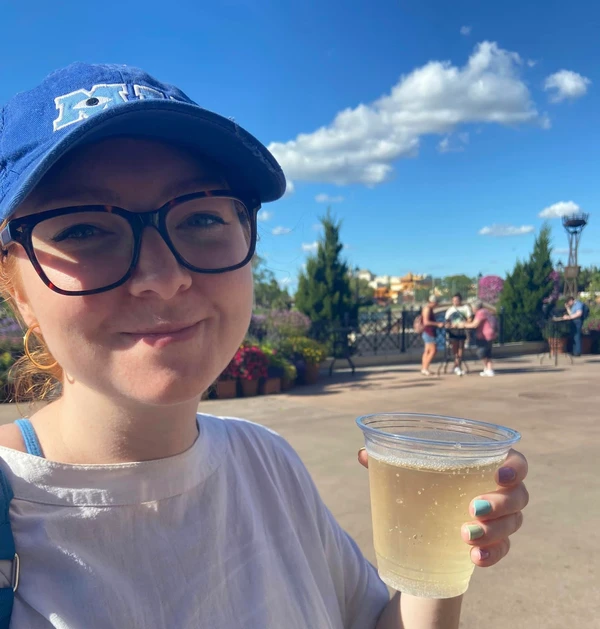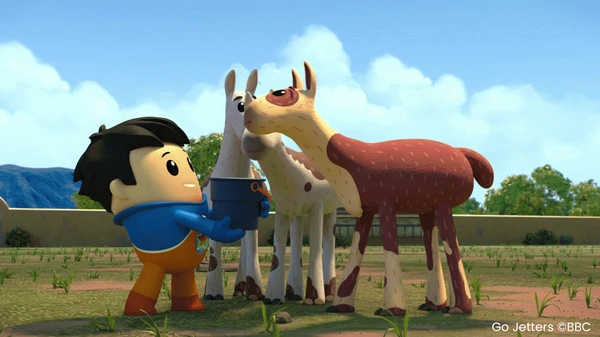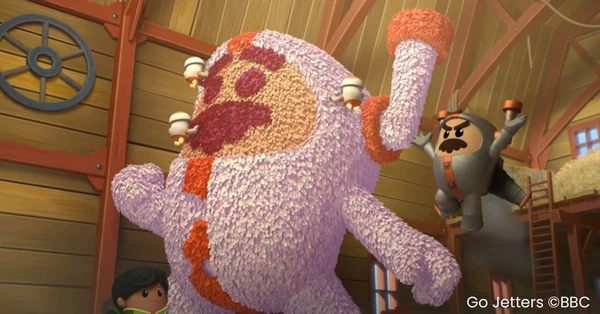

Job Spotlight - Animator

It’s been a while but we’re so chuffed to share the next instalment of our Job Spotlight series where we introduce you to BZ’er, Senior Animator, Meg Pearce.
Read on to find out more about Meg, her role and for her need-to-know advice for anyone looking for a career in Animation!

Tell us a bit about yourself...
I’m Meg, a Senior Animator. I’ve been working at BlueZoo for 6 years. I’ve carved a pretty traditional route into the industry; university, internship then a couple of junior animator roles before joining BlueZoo. I’ve worked on a number of shows and shorts over the years but my favourite so far has been Cbeebies’ ‘Go Jetters’, the team were fantastic and the show itself was full of energy and great personality. I’m a strong believer in living and experiencing life first hand in order to animate it, you won't see me stuck behind a screen all day!

What made you want to get into animation?
I don’t have the typical story of being inspired by a particular film when I was a wee babe. I didn't know it was a job until I was ushered onto the path of going to university. At the very last minute I decided I wanted to work in video games, and upon joining a games course I was then almost immediately enrolled into the animation course. I found animating equally fun and challenging and it continues to be so every day. Looking back it was a great lesson in being adaptable, which is an important trait to have in the animation industry.
What does a typical day look like for you?
At BlueZoo we self manage our time, we choose what to work on each day within our allocated workload. We complete our allocation in stages in order to give time for our directors to give feedback, this is important so anything that needs changing is addressed early and doesn't waste time.
The typical stages in TV are
These stages generally take a week each. However each show will have the schedule decided beforehand and can vary between shows.
We will also have a few days scheduled addressing additional fixes from previous episodes which have either come from our directors, clients or the lighting and comp team.
What are the best bits of your job?
I love all the opportunities that working in TV brings. I find problem solving any technical animation issues to be extremely rewarding. The episodes have a relatively fast turnaround meaning we encounter different characters and scenarios regularly. Not to mention each show has its own style of animation. The job is never monotonous.

What software do you use?
On production we use Autodesk Maya to animate. Within Maya we use plugins such as Animbot, Anim School Picker and Studio Library, we also have many tools our wonderful Pipeline team have created for us. All these plugins enable us to work more efficiently and consistently.
We also use Keyframe Pro to watch our work in a sequence and make annotations and draw-overs to analyse and improve our work.
In order to keep track of our allocations and communicate fixes with other departments we use Ftrack. In recent years we have also used it to upload our work for feedback.
What advice would you give for someone wanting to work in animation?
You don’t need a degree to work in the industry, there are plenty of online resources and free courses you can look into. There are a number of software either for free or using a student licence to practise. Each can be different to use and it's good to learn a few as companies have a variety of preferences and requirements. Researching and implementing the 12 principles of animation is the most important thing to learn if you want to be an animator, some of which I mention above in my day to day.
If you’re looking to enter the industry itself, an integral part is networking. Going to career fairs and animation shows is a great option to make connections and get feedback on your showreel. It's also an opportunity to find out more about the kind of industry/ company you want to work in. If you can obtain a mentor through networking or via online, this can be just as valuable to your development as work experience.
Lastly, don’t worry if you feel you’re not ‘good enough’ or not ‘fast enough’, you’ll never stop learning if you never stop practising.
If you’re interested in joining us on our mission to create animation as a force for good, you can keep up-to-date with our current vacancies by following our Careers page on Twitter or checking out our Careers website!

